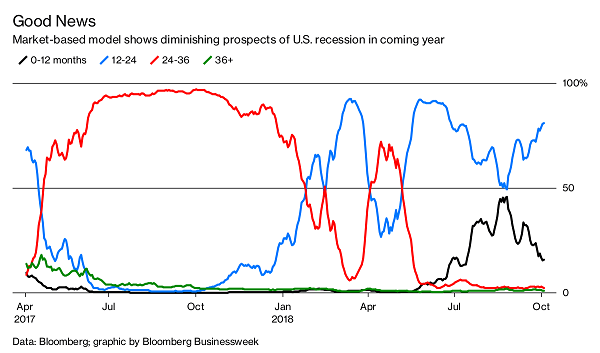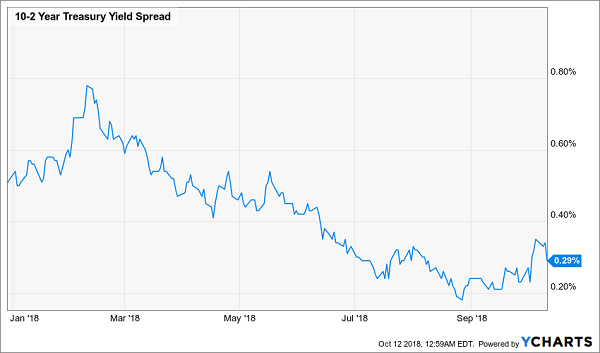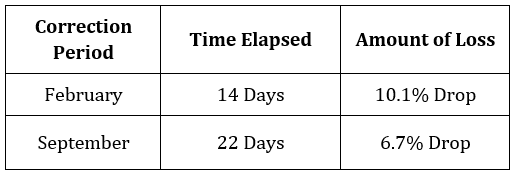2018 has been volatile but so far into the year yielded a flat return for income stock investors. If you look at the Vanguard REIT Index Fund (NYSE: VNQ) you see that in 2018 investors have been hot and cold about REITs. Each time the Fed has increased short term rates, REITs have sold off. The result is a sector, including dividends, that is just above breakeven for the past 12 months. Over the same period, the S&P 500 is up over 11%. One way to get capital gains from REITs is to focus on buying those real estate investment trusts that will increase the dividends paid to shareholders.
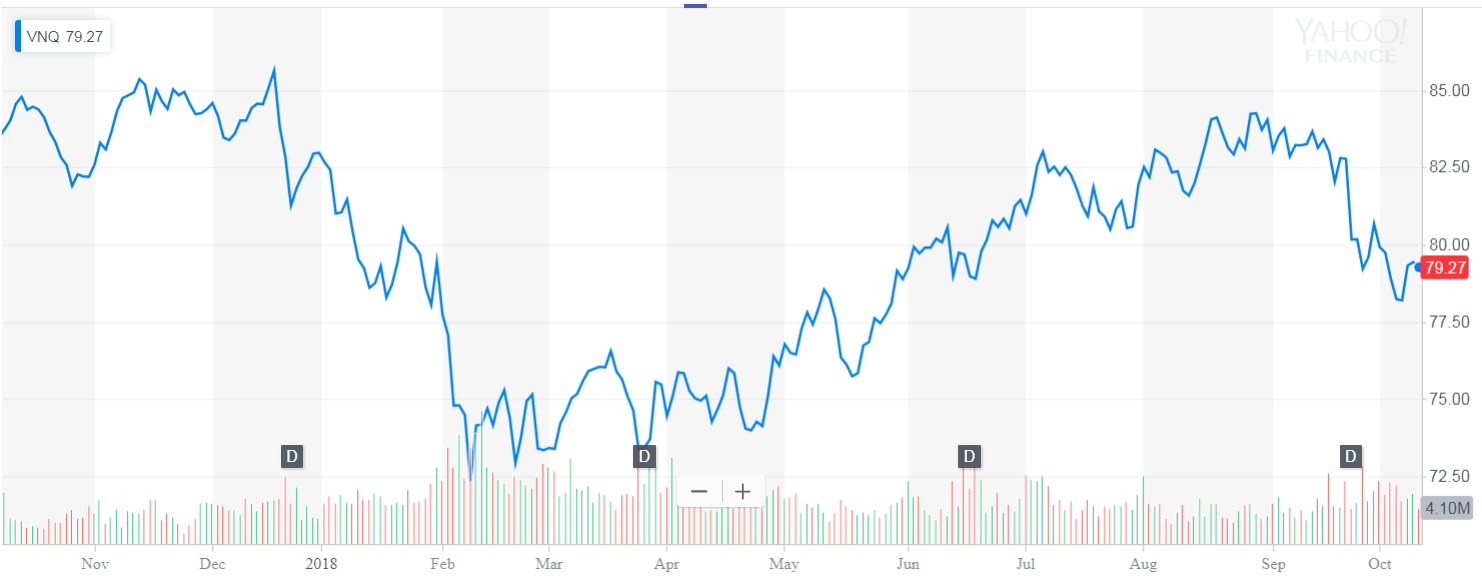
Most REITs that regularly increase dividends do so once a year, and then pay the new dividend rate for the next four quarters. The timing of dividend increases is not widely followed, so if you know a bump in the payout rate of a REIT is coming soon, you can buy shares before the announcement and have a good chance at a nice share price boost when the new rate becomes actual news.
One of my income stock analysis techniques is to develop and maintain a database of REITs that tracks when during the year they have historically announced new dividend rates.
Currently I have about 130 REITs in the database, and out of those 90 have been increasing their payouts to shareholders.
While these REITs announce new dividend rates once a year, the timing varies. For every month of the year, there are companies that will announce a new rate.
Related: Buy This 8.4% REIT That’s Raised Dividends Every Quarter
Now is the time to look at the REITs that should increase dividends in November.
If you buy shares three to four weeks ahead of the dividend announcement you will be ahead of the crowd. The higher rate should produce a share price increase. In the worst case, your yield will go up compared to the current percentage quoted.
Here are four REITs that will probably announce dividend boosts in November.
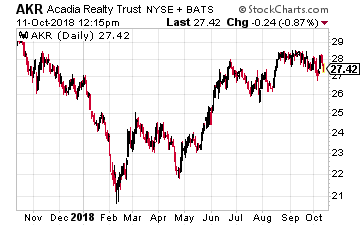 Acadia Realty Trust (NYSE: AKR) acquires, redevelops and manages retail properties in the nation’s most dynamic urban and street-retail corridors, including those in New York, San Francisco, Chicago, Washington DC, and Boston.
Acadia Realty Trust (NYSE: AKR) acquires, redevelops and manages retail properties in the nation’s most dynamic urban and street-retail corridors, including those in New York, San Francisco, Chicago, Washington DC, and Boston.
Acadia Realty will announce its third quarter earnings results at the end of October. The new dividend rate announcement occurs during the first half of November. For the last five years, the dividend has been bumped up by one cent, which would be a 3.7% increase on the current $0.27 per quarter dividend. Payment of the new rate starts in January with a December 31 record date.
This REIT has also paid a special yearend dividend each of the last three out of the last five years.
AKR currently yields 3.6%.
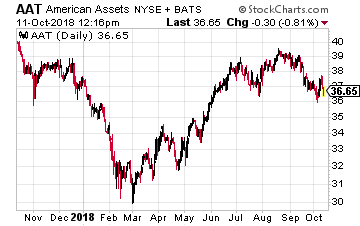 American Assets Trust, Inc. (NYSE: AAT) owns, operates, acquires and develops retail, office, multifamily and mixed-use properties in high-barrier-to-entry markets in Southern California, Northern California, Oregon, Washington, Texas and Hawaii.
American Assets Trust, Inc. (NYSE: AAT) owns, operates, acquires and develops retail, office, multifamily and mixed-use properties in high-barrier-to-entry markets in Southern California, Northern California, Oregon, Washington, Texas and Hawaii.
This REIT has announced a higher dividend in November of each of the last five years. In 2017 the new dividend was 3.8% higher than the old payout.
It looks like this year’s increase will be about 5%. The next dividend announcement will be around November 1 and have a record date of about December 10.
The payment will be just before or just after Christmas.
AAT currently yields 2.9%.
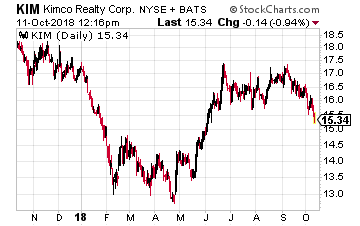 Kimco Realty Corp (NYSE: KIM) owns and manages open air shopping centers. This REIT slashed its dividend in 2009, during the financial crisis, but has increased it every year since then.
Kimco Realty Corp (NYSE: KIM) owns and manages open air shopping centers. This REIT slashed its dividend in 2009, during the financial crisis, but has increased it every year since then.
Kimco has increased the dividend by 7% on average for the last five years, and in 2017 the payout was increased by 4.2%. The company’s adjusted FFO per share was up flat in the first half of 2018 compared to the same period in 2017, so this year’s increase will probably be more modest than in the past.
Kimco typically announces a new dividend rate at the end of October or in in very early November with record and payment dates in January.
KIM currently yields 7.1%.
Bonus investment idea:
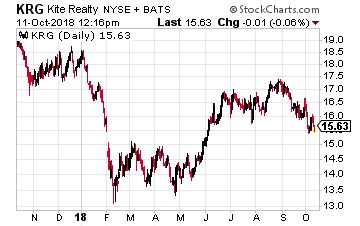 Kite Realty Group Trust (NYSE: KRG) is engaged in the ownership, operation, acquisition, development and redevelopment of neighborhood and community shopping centers in selected markets in the United States.
Kite Realty Group Trust (NYSE: KRG) is engaged in the ownership, operation, acquisition, development and redevelopment of neighborhood and community shopping centers in selected markets in the United States.
Kite was forced to slash its dividend rate during the 2007-2008 recession. The company restarted dividend growth in 2014.
The dividend has been increased by 33% since the first quarter of that year and was boosted by 5% last year.
I forecast a more moderate 3% to 5% increase this year. In recent years, Kite Realty announced a dividend increase in the last week of November, with record and payment dates in January.
Pay Your Bills for LIFE with These Dividend StocksGet your hands on my most comprehensive, step-by-step dividend plan yet. In just a few minutes, you will have a 36-month road map that could generate $4,804 (or more!) per month for life. It's the perfect supplement to Social Security and works even if the stock market tanks. Over 6,500 retirement investors have already followed the recommendations I've laid out.
Click here for complete details to start your plan today.



